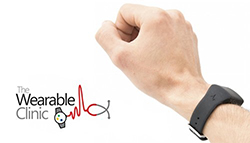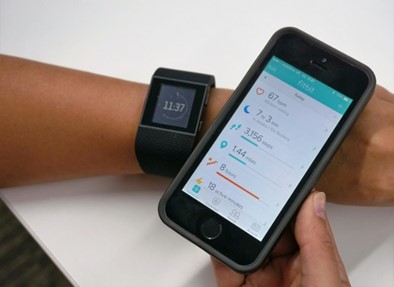The Wearable Clinic
Connecting health, self and care.
Many people with long-term conditions find that their symptoms fluctuate in severity over time and therefore regular visits to the clinic may be unnecessary, potentially wasting the time and resources of patients and professionals.
On the other hand, visits may not be timely or specific enough to intervene before relapses lead to major events or costly hospitalisations.

A collaboration between the Universities of Manchester and York, the EPSRC-funded Wearable Clinic is aiming to develop algorithms, statistical models, and software that integrate electronic healthcare records with data collected from wearable wrist sensors and smartphone technologies to monitor symptoms in daily life and help predict adverse events.
The focus is on two clinical exemplars of long term-term conditions: schizophrenia and chronic kidney disease.
Methodology
Statistical techniques will be applied to see if data collected from patients using wearables can be used to a) predict changes in symptoms and b) produce tailored care plans for individual patients.
The aim is to trial methods that collect and use data in ways that take into account individual risk factors (eg age, ethnicity) and conserve the battery life of wearable devices.

The technical aspects of the Wearable Clinic will be trialled with a small number of healthy volunteers, people with schizophrenia, and people with chronic kidney disease.
Costs, benefits, and potential risks will be investigated in its earliest stages of development and, where necessary and feasible, integrate solutions during the lifetime of the project.
A series of workshops, open to the public, will be held to explore cross-cutting issues such as trustworthy data use and privacy.
Benefits
The NHS faces the challenge of implementing £22bn of efficiency savings by 2020, and it is expected that important savings will have to come from the intelligent use of IT for patients with long-term conditions.
These conditions place a major burden on health and social care services, coupled with a significant reduction in quality of life for affected individuals. Half of GP appointments, and £7 in every £10 spent on health and social care, is spent on treating and caring for people with long-term conditions.
The number of people affected, especially those with multiple coexisting conditions, increases steadily as a result of population ageing and lifestyle factors.
The vision of Wearable Clinic is to enable the co-design of new forms of collaborative care that improve long-term condition management through dynamic personal care plans that adapt to the changing state of the individual and the world around them.
Our goal is to empower patients to become managers of their own care through actionable care-planning information and mobile/wearable technologies.
Intended outcomes
- To design computer and statistical models that minimise communication demand on wearable sensors, increasing battery life.
- To develop methods for predicting health risks in patients with one or more long-term conditions from electronic health records (EHRs).
- To create computer models for personalised care planning for patients with long-term conditions that take account of predicted risks; individual health and care goals; and available care resources.
- To support the future real-world deployment of the Wearable Clinic through early assessment of user acceptability; potential health and economic benefits; patient safety and data security risks; and regulatory challenges associated with clinical deployment.
More information and related documents are available on the Health eResearch Centre website.
